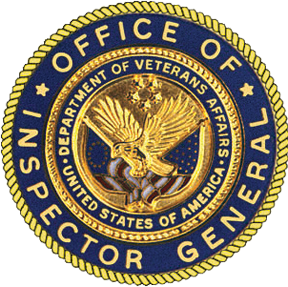All Reports
Continue to make improvements to the scheduling training as needed to address feedback from schedulers.
Require that some schedulers from each clinic fully test the scheduling capabilities of their clinics, solicit feedback from the schedulers to identify system or process issues, and make improvements as needed
Issue guidance to facility staff on which date fields in the new system schedulers should use to measure patient wait times.
Develop a mechanism to track and then monitor all tickets related to the new scheduling system, and then ensure the Office of Electronic Health Record Modernization evaluates whether Cerner effectively resolved the tickets within the timeliness metrics established in the contract.
Develop a strategy to identify and resolve additional scheduling issues in a timely manner as the Office of Electronic Health Record Modernization deploys the new electronic health record at future facilities.
Develop a mechanism to assess whether facility employees accurately scheduled patient appointments in the new scheduling system, and then ensure facility leaders conduct routine scheduling audits.
Evaluate whether patients received care within the time frames directed by Veterans Health Administration policy when scheduled through the new system.
Provide guidance to schedulers to consistently address system limitations until problems are resolved.
The Under Secretary for Health evaluates the time frame for adjudicating and communicating clinical appeals, determines applicability to the 24-hour requirement for completing stat community care consults, and takes action as warranted.
Continue the system modernization efforts that provide VA with the capability to generate the required DATA Act reporting files containing the necessary elements to meet compliance with the DATA Act. Ensure the modernization will provide the following:
a. Accurate reporting of object class, program activity codes, program activity names, and all other elements required by the DATA Act.
b. Award identification to allow VA to be able to develop a File C and reconcile the File C to both summary level data (Files A and B) and award level data (File D).
c. Reconciliations with subsidiary systems.
d. A mechanism to ensure transactions are reported that currently may be excluded due to the use of 1358s.
e. Standardized data fields to allow management to record an award ID across financial and supporting systems.
f. Subsidiary systems that are consistent with USSGL or adequately mapped to USSGL to ensure transactions contain the necessary data elements/field required to meet DATA Act reporting.
g. Differentiation between direct and reimbursable amounts.
Improve reviewing and validating eCMS actions to underlying contract documentation to assess the completeness and accuracy of data stored in eCMS. Identified exceptions should continue to be documented, and appropriate corrective actions (e.g., adequate training and guidance) should be completed to ensure and improve completeness and accuracy of data stored in eCMS.
The Chief of Staff and Associate Director for Patient Care Services evaluate and determine any additional reasons for noncompliance and ensure all required members attend Disruptive Behavior Committee meetings.
The Director evaluates and determines any additional reasons for noncompliance and ensures that staff complete the required prevention and management of disruptive behavior training based on the risk level assigned to their work areas.
The under secretary for health in coordination with the executive director of the Office of Asset Enterprise Management should create a standardized set of performance measures and reporting standards for offices involved in developing, approving, and executing long-range action plans to ensure NRM projects that align with strategic goals are executed.
The System Director evaluates and determines any additional reasons for noncompliance and ensures staff complete all required prevention and management of disruptive behavior training based on the risk level assigned to their work areas.
The System Director evaluates and determines any additional reasons for noncompliance and makes certain that staff complete the required prevention and management of disruptive behavior training based on the risk level assigned to their work areas.
